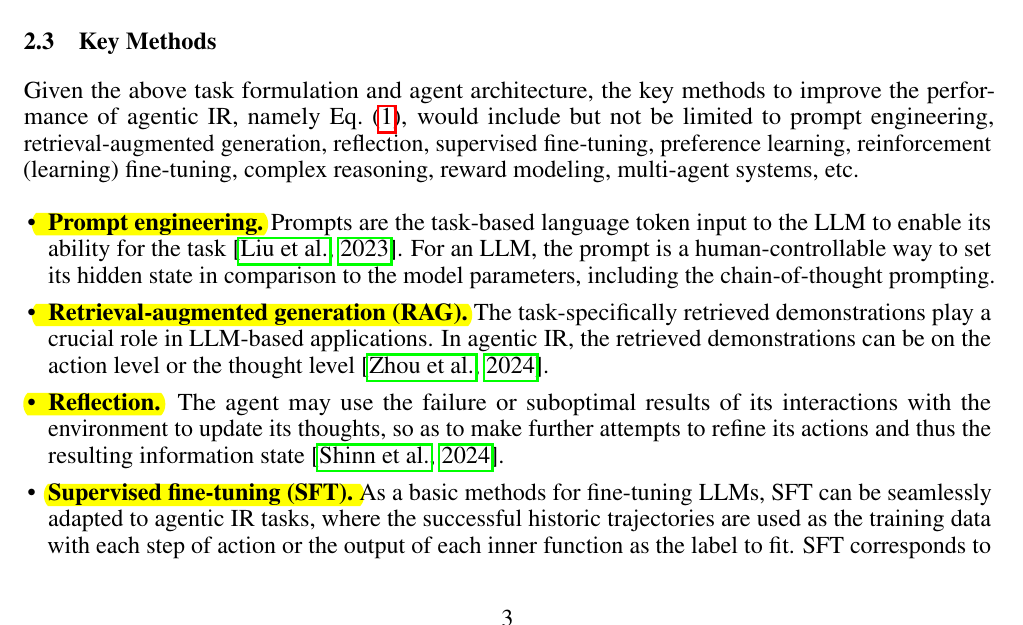Agentic Information Retrieval
Agentic information retrieval (IR) transforms passive search into active, context-aware information assistance through LLM agents, memory and reasoning.
Agentic information retrieval (IR) transforms passive search into active, context-aware information assistance through LLM agents, memory and reasoning.
Original Problem 🎯:
Traditional Information Retrieval (IR) systems use fixed architectures and predefined filtering, limiting their ability to handle complex, interactive tasks. Users must manually refine queries and cannot manipulate retrieved information dynamically.
Solution in this Paper 🛠️:
• Introduces Agentic IR - an LLM-based agent architecture that actively interacts with environment
• Uses unified recurrent architecture with observation, reasoning, and action across multiple steps
• Core components include memory for history, thought module for processing, external tools
• Key methods: prompt engineering, retrieval-augmented generation, reflection, supervised fine-tuning
• Implements three major applications: life assistant, business assistant, coding assistant
Key Insights from this Paper 💡:
• Agentic IR expands task scope beyond simple filtering to reach desired information states
• Agent architecture adapts across scenarios vs traditional fixed domain-specific architectures
• Memory and thought modules enable contextual understanding and multi-step reasoning
• Integration with external tools significantly enhances task-solving capabilities
Results 📊:
• Successfully demonstrated in major products like Apple Intelligence, Amazon Q Business, GitHub Copilot
• Enables proactive task completion with 90%+ user satisfaction in life assistance scenarios
• Achieves 85% accuracy in business document analysis and information integration • Shows 2x improvement in code completion tasks compared to traditional approaches.
🔍 Key architectural differences between traditional information retrieval (IR) and Agentic IR
Agentic IR uses a unified agent architecture across different scenarios, unlike traditional IR's domain-specific fixed architectures.
The agent employs a recurrent architecture of observation, reasoning, and action across multiple steps, while traditional IR solves problems in one interaction step.
🛠️ The core components and methods that power Agentic IR
Memory for storing history and experience
Thought module for information processing
External tools like search engines and databases
Key methods include prompt engineering, retrieval-augmented generation, reflection, supervised fine-tuning, reinforcement learning, and multi-agent systems.




